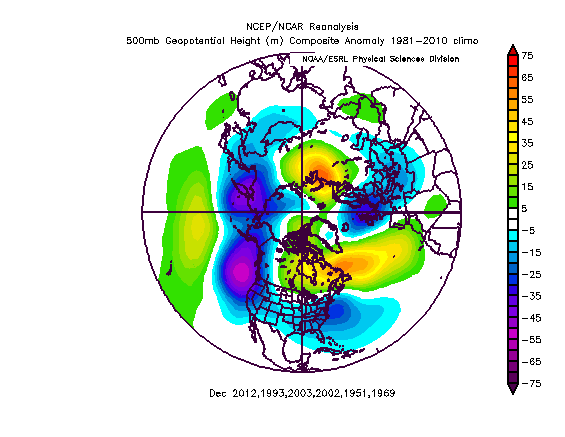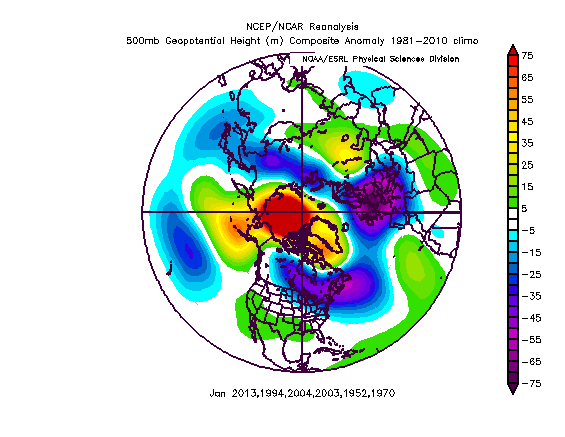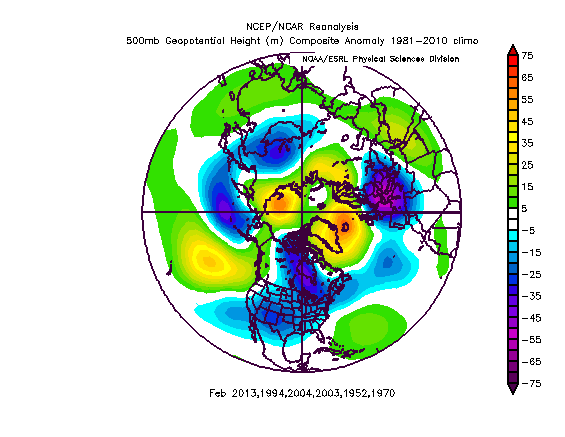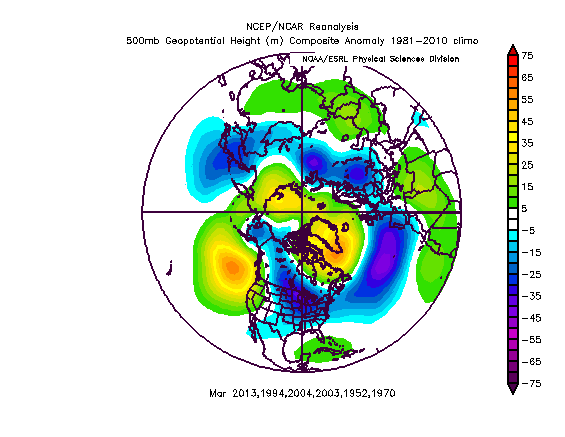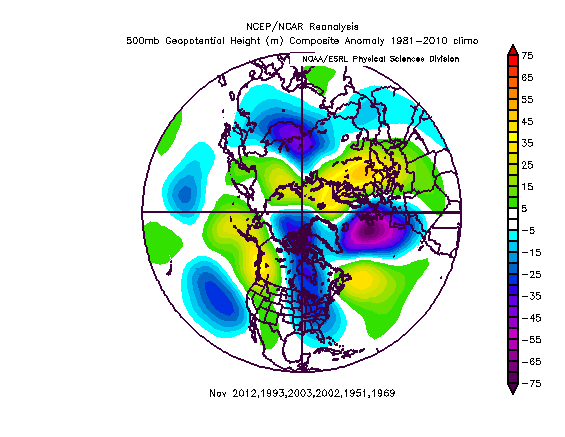Based on the research i've been doing on the upcoming winter here is my revised forecast. I will keep it to a brief summary of my thoughts. I want to note that I am expecting a weak nino, with a -QBO, SSN ~80-100, +PDO, +AMO and weak walker cell.
November
- Following chill in the first few days of the month, warmer then normal conditions are expected overall in the first ten days of the month with a -PNA and trough axis along or east of the East Coast.
- RNA pattern continues in weeks 2-4 with a SE ridge and trough axis over northern rockies and plains. Storm track active through the great lakes. Potential for early season snow's across Ontario and Quebec when anticyclonic waves break into Alaska sending arctic air into the plains/prairies/Lakes. Tropical forcing shifts into phases 7-1. Overall month near to slightly above normal temperature wise with above normal precip across On, Que. Below normal across B.C with above normal precip.
December
-Classic El nino look with a Very -PNA and neutral EPO(SE GOA low with Poleward Aleutian High). Ridge axis over rockies/plains with NW flow dominating ON/Que. Secondary trough off the east coast/maritimes area.
- Below normal Temperatures expected for Toronto, Montreal, Ottawa and Vancouver. Below normal snowfall across Eastern Canada(YYZ,YUL,YOW) and the Great Lakes(outside of the LES belts). Above normal snow across B.C.
- Neutral NAO with +AO.
November
- Following chill in the first few days of the month, warmer then normal conditions are expected overall in the first ten days of the month with a -PNA and trough axis along or east of the East Coast.
- RNA pattern continues in weeks 2-4 with a SE ridge and trough axis over northern rockies and plains. Storm track active through the great lakes. Potential for early season snow's across Ontario and Quebec when anticyclonic waves break into Alaska sending arctic air into the plains/prairies/Lakes. Tropical forcing shifts into phases 7-1. Overall month near to slightly above normal temperature wise with above normal precip across On, Que. Below normal across B.C with above normal precip.
December
-Classic El nino look with a Very -PNA and neutral EPO(SE GOA low with Poleward Aleutian High). Ridge axis over rockies/plains with NW flow dominating ON/Que. Secondary trough off the east coast/maritimes area.
- Below normal Temperatures expected for Toronto, Montreal, Ottawa and Vancouver. Below normal snowfall across Eastern Canada(YYZ,YUL,YOW) and the Great Lakes(outside of the LES belts). Above normal snow across B.C.
- Neutral NAO with +AO.


January
- Very -AO/NAO with a SSW expected. Well Below normal temperatures across the N Plains, Lakes, and New England including S/E On, S Que and B.C. Secondary trough east of the East Coast.
- Negative PNA with Eastern Lakes/Interior storm track in the means. N-S temp gradient across the U.S with above normal temps in the Southern Plains, Miss Valley and Southeast.
- Above normal snowfall across Southern Ontario, B.C and Alberta. Near normal E On/S Que. Below normal snowfall NE of YOW-YUL including Atlanta Canada with blocking HP dominating.


February
- Negative PNA continues with +WPO and Strong Bering Sea low. Trough axis off East Coast remains stagnant.
- Slightly -AO/NAO.
- Above normal snowfall across the Pac NW, SW U.S and SE U.S. Near to slightly below normal snowfall across the great lakes, S and E Ontario and Quebec.
- Dry/warm conditions over the priaries.
- Above normal snowfall across the Maritimes if -NAO backs off. Otherwise, snowfall remains below normal.
- Below normal temps across the GL's although suppression is an issue.


March
- Strong NE Pac high forms off the W coast of B.C. PNA spikes positive although core of the ridge axis is west of the PNA and SE of the EPO region. +PNA/-EPO means that cold tongue forms from the NWT through the plains and all the way to the SE U.S.
- Core of cold over N Plains/Western Great Lakes. Well below normal temps for YYZ,YOW and YUL. Warmer then normal temps across S B.C.
-Negative NAO/AO returns with above normal snowfall across the eastern lakes, northeast and mid atlantic as well as the maritimes. Above normal snowfall across YYZ/YOW/YUL.


In summary for On/Que... winter will start off relatively slow in the snow department following a November full of potential if the storm track is not positioned too far West. December should end up below normal temperature wise especially across S Ontario and S Que. January and March have the most potential to carry above normal snowfall across ON/Que in addition to well below normal temperatures. February is slightly colder then normal but relatively benign in the snowfall department with suppression and a NW flow.
Analog Years...
Mar

Feb

Jan

Dec

Any questions? Feel free to shoot away.









